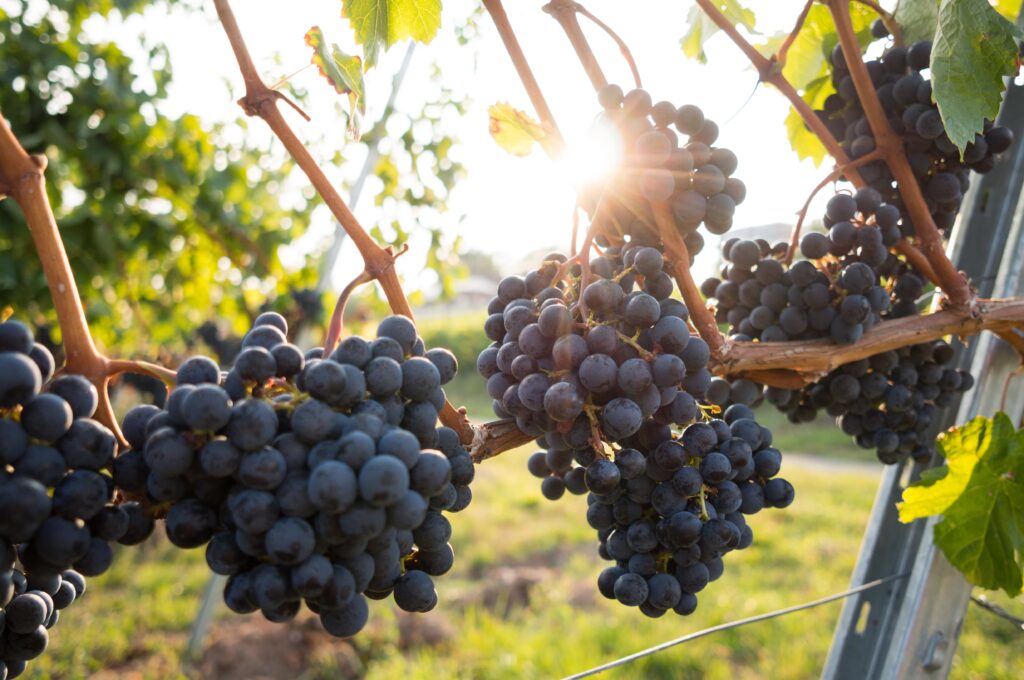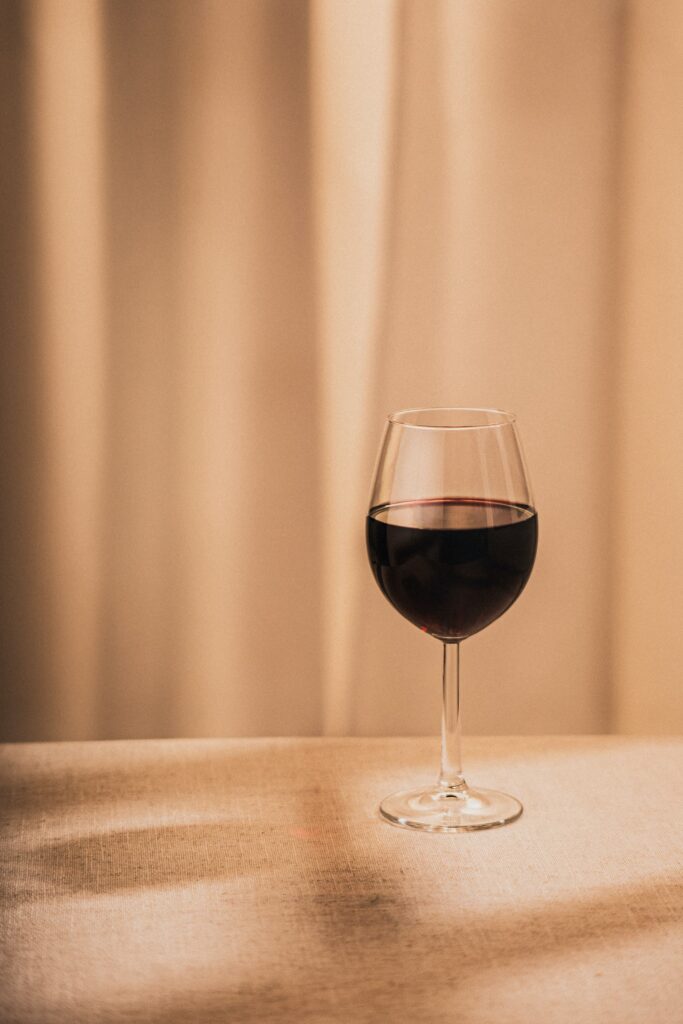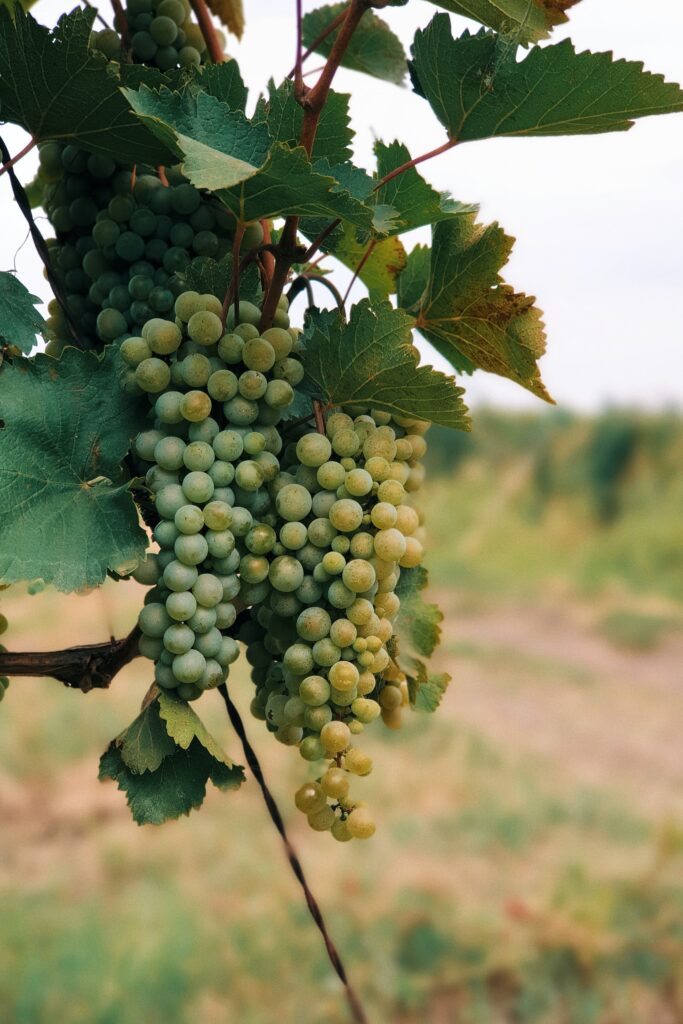The post Grape-growing techniques and their influence on wine taste appeared first on N-TH G-TE VINEYard.com.
]]>
Climate and soil
In France there is a concept “terroir”, derived from the word terra, i.e. earth. It symbolizes the subtle earthy flavor nuances that make a wine unique. The terroir of the drink is made up of the climate, the plants growing nearby, the type of soil and the topography.
The features of the climate which influence the taste of the wine are:
- Temperature;
- Amount of sunshine;
- humidity.
In an area with a hot climate, the grapes mature faster and have a lot of sugar, which is good for the taste of the wine. Although too high temperatures reduce yields due to drought, berries under scorching rays dry out. Lower temperatures result in slower ripening, which is reflected in the brew, making it richer and richer in flavor. Moderate climates are considered the most favorable for wine production.
In conditions of low humidity berries dry out, too high humidity causes diseases, makes grapes watery.
Full-fledged conditions for growing grapes are only possible in a place “under the sun”. The shorter the sunny day, the higher the sleepers on which grapes are grown. The sun gives the right sweetness, richness, and flavor to the variety.
Each type of soil affects the finished wine in its own way. The fatness of the soil determines the density of the planting, this is related to the amount of nitrogen that is considered. Each variety of good wine belongs to a different region for the most part because of the characteristics of the soil.
Grape growing techniques
The secrets of growing grapes are not only in the peculiarities of the region, the human factor plays not the least role. For the taste qualities of the drink to meet the highest standards, it is necessary to ensure competent care, which includes:
- grafting of grapevines;
- pruning;
- treatment and protection against diseases and pests.
In order to ensure good immunity of plants, to increase survival rate, vines of valuable varieties are grafted on a stronger technical variety. The plant acquires the properties of grafting and rootstock. The root system of such a plant will not freeze, will wake up earlier from hibernation, which means that useful substances will start to enter the ground part of the vine earlier, and ripening of berries will come earlier.
Timely pruning of vines and their formation (training) are the most important steps in winemaking. The essence of operations is the removal of unnecessary parts of the plant, the difference lies in the application of the methodology at different stages of vine development. Training takes place in the first years of life, and is done frequently. Then comes the annual pruning. Shaping at a young age gives a strong woody trunk, the correct position of the root net, the crown is spread out to the sides, fixed so that the leaves of the plant receive the necessary amount of sun, without interfering with the neighbors.
Annual pruning is necessary to reduce the amount of harvest. Does that sound strange? It’s easy to explain: the more fruits, the worse and weaker the taste of the finished product. To get concentrated berries of a high quality variety you need to take the pruning technique seriously.
Grapes are delicious, juicy, sweet berries that attract many pests. They can ruin the harvest, and diseases weaken the plant, which affects the ripening time, taste. Some ailments are capable of “cutting out” an entire vineyard.
Wine production depending on grape growing technique
The huge number of varieties of wine is not only due to climatic features of the area and types of soil. Winemakers use different techniques, each of which makes the taste of the drink unique.

Types of wines, depending on the technique of growing the grapes:
- Wines made from vines grown with organic cultivation;
- Wines from vines grown with traditional techniques;
- Wines from vines grown with the latest techniques.
Advocates of organic wine advocate for organic vines. Organic wine production has become quite popular, and the motto of grape growers is naturalness and purity of the drink. Only organic fertilizers are used in the vineyard, and no harmful chemical protectants are used. Organic wines, whose raw materials are rich in minerals, are said to have a bright flavor and aroma.
Traditional techniques, providing all the features of growing grapes, give more confidence in obtaining a rich harvest and compliance with the taste of the drink variety.
As mechanisms have evolved, the conditions for growing grapes have changed. Advanced grape growers use innovative, intelligent machines to fine-tune wine production to automatism. Smart vineyards can control any parameters: humidity, watering frequency, weather, etc. Precise sensors monitor the health of the grapes around the clock. This approach ensures consistency of flavor and aroma, which become less dependent on the mood of nature.
Conclusion
The secrets of growing grapes are there for every grape grower. There is a lot of debate about which growing technique is the best. Adherents of know-how advocate full automation, lovers of HVA give preference to organic wines, connoisseurs of traditional growing methods will prefer the usual technique. Wine production is a delicate business, the taste is influenced by different factors from the first days of vine sprout development. Every winegrower and winemaker has a difficult task – to get a quality result of labor, thus increasing competitiveness.
The post Grape-growing techniques and their influence on wine taste appeared first on N-TH G-TE VINEYard.com.
]]>The post How to make your own wine? appeared first on N-TH G-TE VINEYard.com.
]]>
Increasingly popular in the world are wine casinos, where over a bottle of delicious wine companies of friends play gambling. Arrange a casino https://onlinecasinozonder.com/ at home, get the cards and make your own wine drink. How to make homemade wine and please your friends, surprising them with their unusual skills? Let’s get to the bottom of it.
Rules for making wine at home
If you do not know how to make wine at home, then try to follow the steps according to the prescribed instructions below:
- Choose quality grapes and pick them. In order for the grapes to retain the yeast needed for fermentation, the berries should be picked in dry weather, preferably several days after the past rain. Be sure to choose ripe and juicy fruit, as unripe berries are very acidic, which will only spoil the must.
- Rinse the grapes thoroughly of dirt and crush the years to get a clean juice. Collect the top layer of peel in a special container and squeeze with a press or hands. Filter the resulting juice through gauze and pour several times from one container to another to oxygenate the juice.
- Add sugar and yeast to the juice. Approximately 2% sugar yields 1% alcohol in the finished drink, but do not exceed 13-14%, as the wine yeast stops working at this turnover. For red wine, it is recommended to add 2 to 4 pounds of sugar per 15 kilograms of grapes. For white grapes, such proportions will need to be applied already for 25 kilograms of berries. At home, you don’t need to add additional water, if you care about taste and quality, not quantity.
- Remove the sediment from the liquid and pour the drink into a glass or plastic container, letting it ferment for 7-10 days.
- To remove the sediment, pour the wine again for 2 to 3 weeks, and refine the flavor of the resulting product by filtration.
- Pour the wine into tight bottles and close them. Store the wine in a dark, cool place for a few months to mature, and only then consume it.
The shelf life of the product at a temperature of 5 to 12 degrees is 5 years, if the wine is in a tightly closed vessel.
What grapes should be used for homemade wine?
Grapes are divided into several varieties:

- Table – juicy and sweet berries, attractive not only by the size of the berries themselves and the shape of the bunches. This variety includes “Ladyfingers”, “Italy”, “Kish-Mish”, “Jupiter”, “Kesha” and others.
- Technical grapes – more intense varieties, which include “Cabernet-Savignon”, “Chasla”, “Chardonnay”, “Riesling”, “Saperavi” and others.
At home it is better to use table grapes, as it is more juicy and to get the necessary amount of juice from it will be much easier. The factories use only technical grapes because of the required sugar and acid content.
Now, having studied a little deeper the peculiarities of winemaking you can try to make your own wine drink, adhering to our recommendations.
Conclusion
Making wine at home is a fascinating and pleasure-giving process. If you want to try your hand at it, you can enjoy your own wine that reflects your attention to detail and personal taste preference.
In this article, we’ve covered the basic steps of making wine at home. Starting with selecting the right grapes and preparing the raw materials, we moved on to the process of fermenting and aging the wine itself. It is important to follow hygienic standards and the correct proportions when adding yeast and other additives.
The post How to make your own wine? appeared first on N-TH G-TE VINEYard.com.
]]>The post What are the best varieties for red wine appeared first on N-TH G-TE VINEYard.com.
]]>A black yielding grape that ripens in 141-151 days. There is no reliable information about its origin, but Traminer and Pinot ménier are considered likely parents. The bush is medium-grown with an unusual coloration of the lower leaves (green with a red tint). Flowers are ovipotent, there are no problems with pollination. The bunch is small in size, weighing 66-120 grams, the shape is often cylindrical. The berry has a pleasant taste, colorless juice and balanced sugar content. Its shape is rounded and its color is dark blue.
The yield of Pinot noir is 50-60 cwt/ha. The plant is vulnerable to phylloxera, it is tolerant to grey rot, oidium.
Saperavi
A very old Georgian grape variety with dark blue berries. Saperavi vegetation period is 150-160 days, and harvesting begins in late September-early October. The bunches are beautifully shaped with wide-conical bunches of small grapes, the weight of one grape is 90-100 gr. The grapes are very juicy and taste harmonious, weighing barely over 1g. Each berry contains 2-3 seeds.
The plant has a poor resistance to mildew and oidium, with high humidity is affected by gray rot. Compared with other varieties, it is less often damaged by leafhopper.
Yield Saperavi 90-110 cwt/ha. This crop is frost-resistant, it survives the winter without shelter under temperature conditions not exceeding -20°.
Cabernet Sauvignon
The cabernet sauvignon berries are very juicy and have a well-balanced taste with a hint of currant. It is a French varietal, but today it is cultivated in many countries of the world. The ripeness is 143-165 days. The grapes are cylindrical in shape and weigh 70-80g. Each berry contains 1-3 seeds. The skin is dark blue medium density, which provides a good safety and portability of fruits.
The yield is 55-60 hundredweight per hectare. There is an increased resistance of culture to mildew and gray rot. Compared with other varieties, it withstands better phylloxera and leafhopper attacks.
Cabernet Franc
Technical ripeness comes after 145-160 days. The unusual taste of berries is filled with different notes, in which raspberries and blackberries are felt. The bunches are cylindrical in shape and dark blue in color, weighing no more than 70-90 grams. The yield is low (35-40 cwt/ha), but this is compensated by the plant’s good resistance to mildew and phylloxera.
Merlot
Merlot variety was bred in France, the alleged parents are considered to be Cabernet Franc crossed with Magdalene and Noir de Charente. Grapes of medium size and density, have a dark blue color with a characteristic waxy patina, weight is 110-150gr. The taste is balanced with a hint of nightshade.
The grapes mature in 152-164 days. The plant shows average resistance to oidium, phylloxera, mildew. Frost-resistance is up to minus 15-17°C.
Sangiovese .
Italian thermophilic variety of technical grape with vegetation period of 145-160 days. Its bushes are medium-height, the flowers are monopolar, the bunches are cylindrical, weighing up to 100 gr. There are many clones with slightly different berry size (0.7-1.3 g). Its taste, rich in various tones, makes any wine drink exquisite.
Syrah
The variety is resistant to cold and high temperatures, but poorly tolerates strong winds and drought. Its flavor qualities meet the requirements of technical grapes, but it cannot boast a high yield (30 centners/hectare). Juice of the fruits of mature plants is saturated with a beautiful dark purple hue and dense. The ripening time of the fruit is 145-158 days. The weight of wide-conical bunches ranges from 80-120 grams.
Carmenere
The grapes are old French varieties with a growing season of 152-165 days. Today it is widely cultivated mainly in Chile, and is considered the pride of the country. The bushes are stout, the bunches may be cylindrical, wide-conical or shapeless, weighing 75-100 gr.
Its berries are medium-sized and weigh barely 1g, but the flesh is very tasty, sweet but not sugary. Its beautiful dark purple color enables to produce pink to dark-colored wines.
Mourvèdre
A late maturing plant from Spain. The bushes are well developed, with a strong vine and root system. Leaves are medium-sized, with a characteristic three-lobed shape. The dark blue berries are often rounded but may become slightly oval, medium berry size. Yield with low irrigation is up to 60 c/ha, but with regular irrigation can significantly increase. The bunches are formed in the form of a cone or cylinder, the berries are tightly pressed to each other.
Grenache
A versatile variety, but most often the fruit is used to make grapes and juice. The variety is one of the most common on the planet due to the adaptability of the vine. The grape is very heat-loving and easily tolerates drought and heat. Soil requirements are also not high when planting seedlings. Yield in dry conditions is high – up to 20 cwt/ha. Features of berries: low acidity, juiciness, ruby color, rich aroma.
The post What are the best varieties for red wine appeared first on N-TH G-TE VINEYard.com.
]]>The post Wine varieties of grapes and what is needed to grow them appeared first on N-TH G-TE VINEYard.com.
]]>WHAT IS NEEDED TO GROW WINE GRAPE VARIETIES?
Wine varieties of grapes, are grown specifically so that in the future, from it could be made wine drinks. Of course, any grape varieties are suitable for this drink, but it is better to use technical grapes. Many people want to decorate their plots with grapes, and as a consequence get a juicy fruit. Grapes require a lot of attention (in its cultivation), but these varieties are less capricious.
Grapes can be grown on any soil, the main thing is to fertilize it properly. If the soil contains a lot of clay, then the grapevine must be well anchored. If the soil is highly acidic, then lime should be added there. It is always necessary to monitor the moisture content of the soil under the grapes, because it loves water, but it is not necessary to overwater it. Wine varieties of grapes like heat and light. Therefore, it is better to grow the culture in southern areas.
PLANTING WINE GRAPE VARIETIES
In order for grapes to root better, he needs proper planting. To do this, a trench of about a meter in length and depth is dug. A peg is fixed in the center, covered with gravel to a height of 10 cm. The top is filled with soil of the same height, and watered with water, humus is introduced. The next layer should be covered with superphosphate, ash and potassium salt, and again a layer of soil. Do not forget about watering. A sapling is tied to a peg by burying it. The distance between them, should be at least one and a half meters from each other.
SOME FEATURES ON THE CARE OF GRAPES
After planting grapes, it is necessary to adhere to certain rules on their care. The earth should always be clean, well loosened, cleared of weeds. After the first manifestation of shoots up to 10 cm, they should be pruned, leaving only three or four. For better growth, every season the vine should be enriched with mineral fertilizers.
Every year the grapes are pruned, and excess shoots are broken off. The plant should be well inspected, and only get rid of weak and damaged branches. Depending on the grape variety, it will need to be covered for the winter.
GRAPE VARIETIES
- Elegia – a wine grape variety with pink berries and a pronounced muscat taste.
- Floral – a wine grape variety with amber-colored berries and musky flavors.
- Muscat Odessa is a wine grape variety with yellow berries and musky flavors.
- Jubilee – a variety of grapes with blue berries and a pleasant taste
- Pineapple – a wine grape variety with white berries and a low-pronounced strawberry flavor.
- Fortuna is a grape variety with blue berries and a strong muscat flavor.
- Festival – grape variety with blue berries and muscat flavor.
- December – a grape variety with blue berries and a pleasant taste.
- Golden Resistant – a grape variety with white berries and a pleasant taste.
- Bianca – grape variety with white berries and pleasant taste.
- Oleg – grape variety with white-pink berries and pleasant taste.
- Livadia black – wine variety of grapes with blue berries with a weakly pronounced muscat taste.
- Gurzufsky pink – wine grape variety with dark red berries and muscat taste.
- Rubin Golodrigi – wine grape variety with dark blue berries and pleasant taste.
- Gift of Magaracha – a grape variety with white berries and a harmonious taste.
- Citron Magaracha is a wine grape variety with amber berries and muscat flavor.
The post Wine varieties of grapes and what is needed to grow them appeared first on N-TH G-TE VINEYard.com.
]]>The post The best white varieties for winemaking appeared first on N-TH G-TE VINEYard.com.
]]>Chardonnay is an internationally known technical variety of Western European origin. It is not possible to find out its pedigree, but it is believed that it is a cross between Pinot Noir and Gué Blanc.
The berries are processed to produce wines with different flavors and fruity aromas. Also part of the harvest is sent annually for the production of wine materials, which are later used as a flavor enhancer of champagne.
Brief characteristics of the plant:
- The bush is formed medium-grown, although strong stems are also found;
- The vegetation period lasts 130-140 days;
- flowers are monoecious, which ensures good pollination;
- conical bunches are loose, weighing 900-1000 gr;
- white-green berries are tinged with a golden hue;
- shape of fruits – rounded slightly elongated;
- Weight of grape – 12-15 grams, each grape contains 2-3 seeds;
- sugar content – 18% with acidity of 8-12 grams per liter;
- Yields – 8-12 t / ha;
- crop is frost-resistant, can withstand temperatures up to minus 20°.
Bianca
The Bianca wine has an unsurpassed taste with notes of vanilla and almond. For the production of table, semi-sweet and other wines, blending with other juices that have low sugar content is used. This helps to avoid the sugary taste that is characteristic of this grape.
The grape was bred in Hungary, and the parents are Villar Blanc and Chasla Bouvier.
Brief characteristics of the plant:
- Early maturing, with a growing season of 110-120 days;
- medium shrub;
- brush cylindrical shape, weight 90-120 g;
- fruits are small and medium, weight 1.5 gr;
- The shape of berries rounded, slightly elongated, color greenish-yellow;
- skin thin, harmonious taste, filled with a bouquet of aromas;
- The harvest does not lose its commercial appearance on the vine after full maturity;
- Sugar content – 20-28% with acidity of 7-9 g / l;
- High resistance to mildew, grey mould, oidium, tolerance to phylloxera;
- frost-resistance – up to minus 27°.
Muscat
Muscat is medium-ripening with a vegetation period of 130-140 days. Muscat is one of the oldest varieties originating from Syria, Arabia and Egypt. The peculiarity of the culture is the ability to accumulate high levels of sugar (up to 25% with an acidity of 6.5-7 g/l).
Brief characteristics:
- The bush is of medium size;
- The weight of conically shaped bunches is 100-450 g;
- berries are dense on the brush, the weight of one on average 4 g;
- flavor is full of nutmeg;
- Yield is 66-109 c / ha;
- resistance to disease is low.
- Excellent marketable and gustatory qualities outweigh poor survival in adverse climatic conditions. Grapes immediately responds to lack of moisture and its overabundance, is not resistant to low temperatures, requires potassium fertilizers.
Sauvignon Blanc
The variety was obtained by crossing Chenin blanc and Taminer. Thanks to magnificent taste and balance of sugar and acidity, the grape has received recognition all over the world. The peculiarity of the culture is the timely harvest. When overripe, the berry loses its properties and taste qualities and becomes unsuitable for winemaking.
Brief characteristic:
- vegetation period 130-135 days;
- bush is medium-grown, but quite powerful with developed root system;
- bunches are small, weighing 75-120 g;
- berries small, color greenish-white with waxy coating (each contains 2-3 seeds);
- yield is low;
- Sugar content – 18-23% with acidity 6,7-11 g / l.
Culture shows weak resistance to oidium and gray rot, tolerance to mildew. Flower shedding is noted in conditions of growing with high humidity. Soils are preferred with the content of clay layers, as well as gravel and sandy inclusions.
Riesling
This variety, a gift of nature itself, is considered the king of the wine industry. High-quality wines are made from berries with an excellent taste, which is full of different notes and shades.
Brief characteristics:
- vegetation period – 140-150 days;
- The bunches are dense, weight 80-100 gr;
- Berries are yellow-green with a glaucous tint, weighing 1.3-1.5 g, rounded;
- skin dense, but thin;
- hardiness to minus 20 °;
- Full ripening of fruits comes in October-November;
- Sugar content 18% with acidity 9-11 g / l;
- resistance to diseases is low.
Pinot Blanc
This representative of the Pinot family is characterized by its multifaceted qualities of taste; it is used to produce still, sparkling and dessert wines. Burgundy is the birthplace of the plant, but today boasts high yields in almost every country in Europe and other regions.
Brief characteristics:
- The growing season is 140-150 days;
- bunches of medium density weighing 85-150 grams;
- Yellow-green round-shaped berries, weighing 1.4-1.7 g;
- average sugar content reaches 20%.
- The peculiarity of the variety lies in its low content of acid and aromatic substances, as a result of which Pinot Blanc is recommended for making wine to be consumed young.
The post The best white varieties for winemaking appeared first on N-TH G-TE VINEYard.com.
]]>